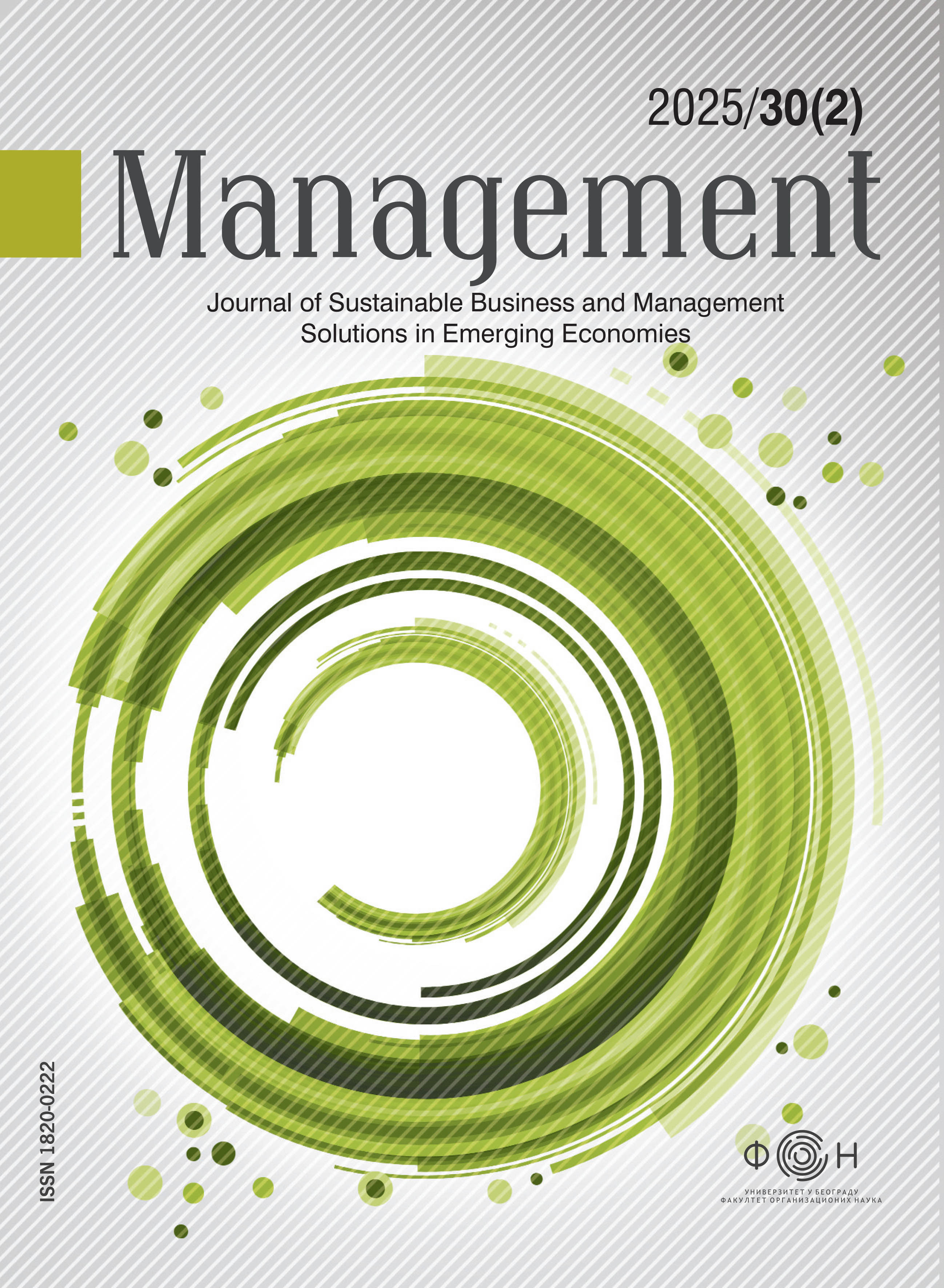The Relationship Between Company Performance and Company Size as a Moderator in the Republic of Serbia
DOI:
https://doi.org/10.7595/management.fon.2025.0007Keywords:
performance, profitability, debt, company size, revenue growth rateAbstract
Research Question: This study examines the relationship between corporate debt and profitability, with a particular focus on the moderating effect of firm size. Motivation: The relationship between corporate debt and profitability has long been a subject of interest in both economic theory and empirical research. However, existing findings are often contradictory, particularly within the context of developing economies such as Serbia, where institutional, financial, and market structures may diverge significantly from those in more advanced economies. Understanding this relationship is crucial, as it directly impacts firms’ financial stability, investment decisions, and long-term competitiveness. In economies in transition, where access to capital is often limited and financial risks are elevated, identifying how leverage affects profitability—and under what conditions—can provide valuable insights for both corporate managers and policymakers. This study seeks to address this gap by examining the extent to which firm size influences the debt–profitability nexus, with a focus on whether larger firms possess higher capacity to absorb the risks and costs associated with leverage. Conceptual Framework: Profitability is the dependent variable and is measured by return on assets (ROA), defined as the ratio of net income to total assets. The main independent variable is corporate debt, measured as the ratio of total debt to total assets. Firm size (SIZE) is represented by the natural logarithm of total assets, while firm age and sales growth are included as control variables. Data: The research was conducted on a sample of companies operating within the territory of the Republic of Serbia, selected from the list of the most successful companies in 2023. The analysis covers the period from 2019 to 2023. After excluding certain firms from the sample, the final analysis was performed on 97 companies. Methods: Following descriptive statistics, correlation analysis was applied to determine relationships between variables. Two models were specified: one without interaction terms and one with interaction terms. For both models, panel regression analysis and fixed effects model (FEM) analysis were performed. Findings: Results from the model without interaction terms indicate that corporate debt has a significant negative impact on profitability within the examined sample. Although companies with higher asset values generally achieve higher ROA, an increase in firm size can have an adverse effect on profitability. The interaction model shows that firm size acts as a moderating factor in the relationship between debt and profitability. Contribution: The key contribution of this research lies in the introduction of firm size as a moderating variable in a panel regression framework—an approach that provides a more nuanced understanding of the interdependencies among financial indicators. By shedding light on these dynamics, the study offers practical implications for optimizing capital structure decisions and enhancing financial performance in developing economies.
Downloads
Published
How to Cite
Issue
Section
License
Copyright (c) 2025 Management:Journal of Sustainable Business and Management Solutions in Emerging Economies

This work is licensed under a Creative Commons Attribution-NonCommercial-NoDerivatives 4.0 International License.








